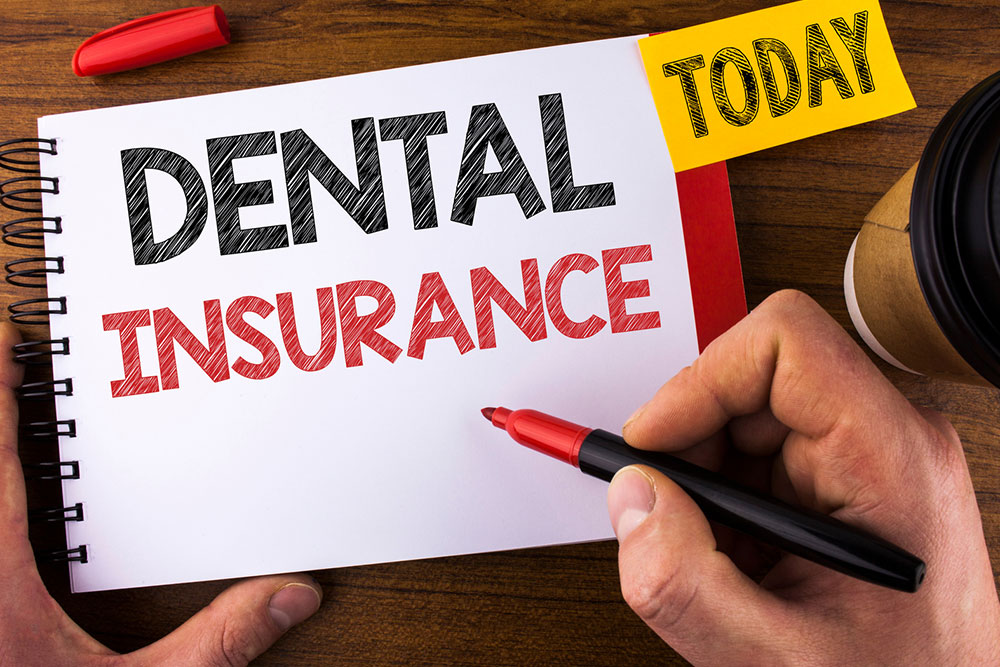Top 4 things that dental insurance doesn’t cover

Most medical or health insurance plans do not cover dental services. As a result, many people opt for special dental insurance plans to ensure that their gums and teeth are well cared for. It is important to note that these dental insurance plans are not all-inclusive. Depending on the policy, one may find themselves paying out-of-pocket for several different services. Most commonly, the following things are not covered by dental insurance:
1. Select procedures
While this may differ from provider to provider, many insurance companies, such as Orthodontia, do not cover the cost of select procedures. Orthodontics is a field of dentistry that focuses on malpositioned teeth and jaws and misaligned bite patterns (such as braces, aligners, or retainers). The cost of these procedures must then be borne out-of-pocket. In some cases, the cost of orthodontics may be covered for children under 19.
2. Cosmetic dentistry
Most dental insurance plans do not cover the cost of esthetic or cosmetic dentistry, as these are not considered “medically necessary.” This includes services such as teeth whitening and veneers.
3. Pre-existing conditions
Some dental insurance policies do not cover pre-existing conditions, such as missing teeth. The cost of treatment for such conditions is generally paid out of pocket.
4. Experimental procedures and services
All dental insurance plans exclude any experimental procedures and services that are not performed under the expert supervision of a licensed dentist.
In addition to these exclusions, one must also be aware of certain limitations that dental insurance plans may have, such as the following:
1. Waiting period
Most individual policies have provisions for a waiting period before the policy kicks in in its entirety. Most policies have a six- to twelve-month waiting period for restorative work, such as fillings. The policy does not cover the cost of treatment during this time. In cases where there are no gaps in dental insurance, this provision may be waived.
2. Restrictions
Some policies may also have stringent time restrictions between services such as fillings, crowns, bridges on the same tooth, or fluoride treatments for children. For instance, some policies only cover the total cost of X-rays once every five years, while others may limit preventative dental visits to two to three times per year.
3. Annual maximum
Some policies may also set caps on annual coverage. Most insurance providers have an annual spending limit between $1000 and $2000. Any overhead costs beyond this limit must be borne out-of-pocket. However, a very small percentage of people (2–4%) actually exceed these annual limits.
4. Coverage structures
Depending on the policy chosen, one may also be limited by coverage structures, that is, the sharing of the overall cost of treatment. In most standard policies, these payments are shared on a 100-80-50 basis. Here’s the low-down:
- 100% of the cost of routine and preventative care, such as dental exams, routine teeth cleanings, dental x-rays, fluoride treatment, and tooth sealants, is covered by the insurer after the deductible is met. There may be certain limitations on the frequency of these services.
- The insurer covers 80% of minor dental procedures after the deductible is met. This may include services such as cavity fillings, emergency X-rays, simple (non-impacted) tooth extractions, treatment of gum disease (periodontics), root canals (endodontics), and emergency dental care such as fractured or damaged teeth.
- Insurance policies generally only cover 50% of the cost of invasive restorative dental procedures, while the rest is out-of-pocket. This may include services such as implants, scaling and root planing, dental crowns, dental inlays and onlays, dental bridges, dentures, restoration repairs, complex extractions (impacted), and oral surgery (like wisdom teeth removal).
Considering these exclusions and limitations is essential when choosing a new dental insurance policy. Apart from annual maximums, out-of-pocket expenses, and other limits, here are some factors one must consider during this time:
- Confirm that the dentist and specialists fall within the insurance network.
- Calculate the plan’s total cost each year, including the premium, co-pay, and deductibles.
- Check the rules surrounding the coverage of emergency treatment, even when traveling.
- Confirm who controls the decision-making process: the patient, dentist, or insurance plan.
- Check the coverage for diagnostic, preventative, and emergency services.
- Look into appointment scheduling procedures.
- Check coverage eligibility and timelines.
How much does dental insurance cost?
One can opt for dental insurance in two distinct ways: under a medical plan that includes dental benefits or as a standalone dental plan. While a medical plan with dental benefits is more convenient, it can be somewhat limiting. In contrast, standalone dental plans offer far more coverage and flexibility.
The cost of standalone dental insurance can vary significantly among providers. Basic policies that only cover preventative care typically cost $22 or less per month, while other, more comprehensive policies may have premiums of $35 or more. Some providers may also expect one to opt for special orthodontic insurance, which may have a separate premium and deductible.
When choosing a dental care plan, one must always look beyond the immediate cost of premiums. It is important to read the fine print and consider the abovementioned factors closely. The right policy for every person may vary depending on their budget, age, oral health, and necessary procedures.



